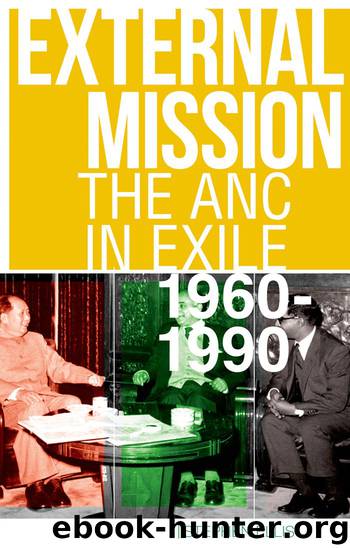External Mission by Ellis Stephen

Author:Ellis, Stephen
Language: eng
Format: epub
Publisher: Oxford University Press, USA
Published: 2013-03-20T16:00:00+00:00
CHAPTER SIX
War Among the People
‘He was very irritable, bad-tempered,’ one of PW Botha’s many foes, the parliamentarian Helen Suzman, said of him.1 ‘He was not enormously intelligent.’
Botha was nevertheless an excellent organiser. Within a short time of his elevation to the premiership, Botha had imposed his authority on the various security services, always prone to squabbling over budgets and areas of responsibility. He turned the State Security Council into the pinnacle of a bureaucratic apparatus, the National Security Management System (NSMS), that could oversee every aspect of defence and offence, and shifted the prime responsibility for fighting insurgency from the police to the military.
The principle around which government was reorganised was Botha’s notion that white South Africa was the target of a total onslaught. Combining the post of Prime Minister with that of Defence Minister until 1980, Botha gave the ‘securocrats’ – the generals and security specialists who acquired such influence under his premiership – the space they needed to implement their strategy. This was based to a large extent on a simple inversion of Maoist principles of insurgency. Umkhonto we Sizwe aimed to develop bases in neighbouring states from which to attack South Africa and eventually to institute a people’s war. The securocrats’ primary aim was to prevent this by applying such pressure to the frontline states that they would deny sanctuary to the ANC or other guerrilla armies. They were prepared to recruit or sponsor local armies of their own for this purpose.
Botha and his securocrats knew that keeping their military enemies at arm’s length was not enough. They had to find a way to move South Africa from the apartheid system to a new dispensation that would be more acceptable to the black population and the rest of the world and yet that could also satisfy the white electorate. This was a conundrum for which there was no obvious solution, but politicians and strategists in Pretoria were beginning to appreciate the extraordinary character of Nelson Mandela, under lock and key for many years already, paying close attention to his opinions on a variety of issues.2 Mandela was in occasional communication not only with his comrades among the ANC leadership in Lusaka, but also with others, including Chief Mangosuthu Buthelezi.
Government advisers searched the literature of political science, sociology and law in search of a formula. The best they could come up with was a timid proposal for sharing power between different sections of the population still based on the notion that South African society was divided into distinct communities defined by race. Even this was too much for some on the right of white politics, who would tolerate no dilution of racial supremacy. In the international field, the country’s reputation went from bad to worse.
Meanwhile, South Africa’s dynamic business sector was identifying black people as a new consumer market. Television arrived in 1976. Billboards advertising drinks and cigarettes were increasingly likely to depict groups of whites and blacks enjoying life together. Government strategists believed that better welfare provisions and rising living standards might help reconcile black South Africans to National Party rule.
Download
This site does not store any files on its server. We only index and link to content provided by other sites. Please contact the content providers to delete copyright contents if any and email us, we'll remove relevant links or contents immediately.
| Africa | Americas |
| Arctic & Antarctica | Asia |
| Australia & Oceania | Europe |
| Middle East | Russia |
| United States | World |
| Ancient Civilizations | Military |
| Historical Study & Educational Resources |
Goodbye Paradise(3460)
Men at Arms by Terry Pratchett(2686)
Tobruk by Peter Fitzsimons(2380)
Arabs by Eugene Rogan(2198)
Pirate Alley by Terry McKnight(2132)
Borders by unknow(2121)
Belonging by Unknown(1736)
It's Our Turn to Eat by Michela Wrong(1595)
The Biafra Story by Frederick Forsyth(1564)
Botswana--Culture Smart! by Michael Main(1487)
The Source by James A. Michener(1460)
A Winter in Arabia by Freya Stark(1449)
Gandhi by Ramachandra Guha(1437)
Coffee: From Bean to Barista by Robert W. Thurston(1422)
Livingstone by Tim Jeal(1396)
The Falls by Unknown(1374)
The Shield and The Sword by Ernle Bradford(1316)
Africa: Altered States, Ordinary Miracles by Richard Dowden(1296)
Egyptian Mythology A Fascinating Guide to Understanding the Gods, Goddesses, Monsters, and Mortals (Greek Mythology - Norse Mythology - Egyptian Mythology) by Matt Clayton(1279)
